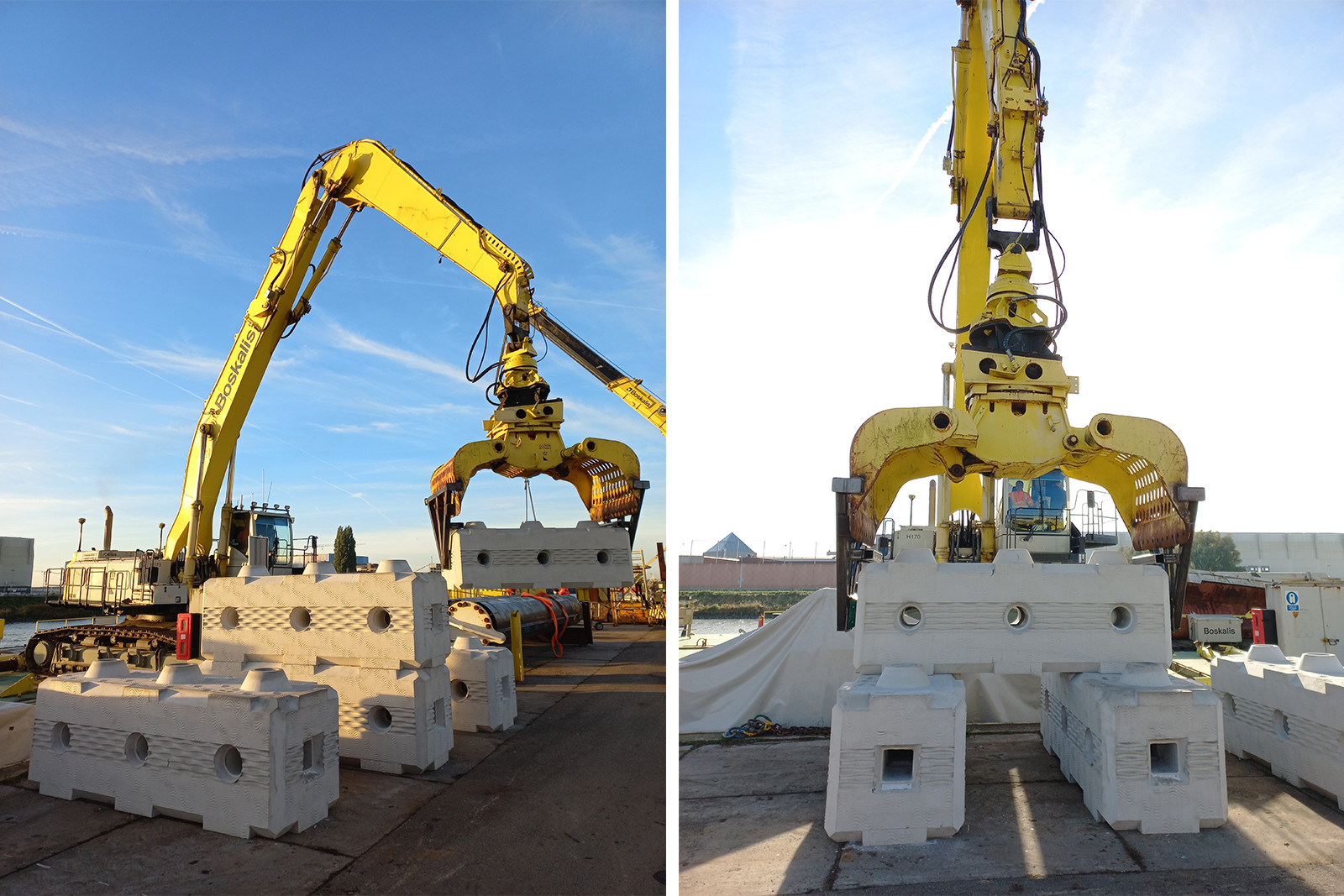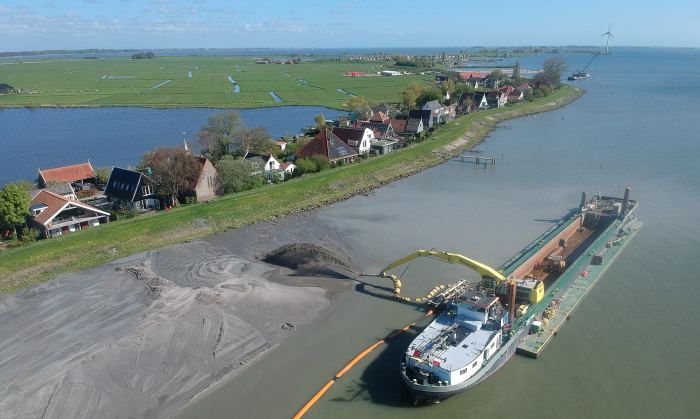Seventeen Lego-like blocks will soon be installed on the banks of the Nieuwe Waterweg in the port of Rotterdam. Together, they will form the Rotterdam Reef Project: an innovative, modular artificial reef that will protect the banks from waves from passing vessels while encouraging underwater biodiversity. And so, Boskalis’ Artificial Reefs Program (ARP) is ‘coming home’.
The Nieuwe Waterweg is Boskalis’ fourth pilot site in the field of artificial reefs and the first in the Netherlands. The reefs launched in Rotterdam were designed and produced by Dutch start-up Reefy. The blocks are made of durable concrete and feature special textures on the surface. There oysters and mussels can settle, creating a lively layer on and around the artificial reef. In this way, the innovation contributes to biodiversity in the Nieuwe Waterweg.
Perfect fit
Since the priority of the Rotterdam Reef Project is to protect the shore from the impact of waves caused by passing vessels, the artificial reef blocks are a perfect fit for the ARP. As a specialist in coastal defense and riverbank protection, Boskalis is always looking for innovative ways to accomplish our work while maintaining a focus on ecology and nature enhancement. “This project focuses on the whole chain; from production of blocks to monitoring the reef. It originated from intensive cooperation between the parties involved to stimulate ecological innovations in coastal and shore protection,” says Ebo de Vries, innovation manager at Boskalis Nederland. “Our involvement is twofold: on the one hand, we are helping a start-up to take a step further in their development. On the other hand, this pilot fits beautifully with the purpose and set-up of Boskalis’ ARP.”


More ecological value
Last October, a dry test was carried out with five blocks at a Boskalis yard in the Netherlands. During the dry test, a special gripper designed by Boskalis was tested to move the blocks. By making several stacks, tolerances and points of interest became clear, and experience could be gained with positioning the blocks according to design. It was a great way to build experience for future positioning of the blocks in the water. If the reefs catch on in the Nieuwe Waterweg, Boskalis is ready to roll out the concept further. De Vries: “Then it certainly offers opportunities to offer this to our international clients in the future in places where there is coastal erosion. It could then serve as an alternative to conventional concrete artificial reefs: the same technical function and performance but with more ecological value.”
Wealth of knowledge and experience
But before that happens, we need to see how the blocks respond to ‘Dutch water’. “In other countries, we have been doing knowledge development on artificial reefs for several years. Think of Monaco, Panama and Kenya where our pilot projects are running,” says Paul Peters, ARP program manager. He works as a marine biologist at Hydronamic and set up the ARP several years ago through various close collaborations within Boskalis. “The international pilots are running well and are a wealth of knowledge and experience. We hope to do the same in the Netherlands. Validating reef technology while looking at where we can fit it into our proposition as a marine contractor is our top priority. This puts Boskalis in a unique knowledge position.”
The Rotterdam Reef Project is a collaboration between Reefy, Boskalis, Rotterdam Municipality and Rijkswaterstaat (the executive agency of the Dutch Ministry of Infrastructure and Water Management).
